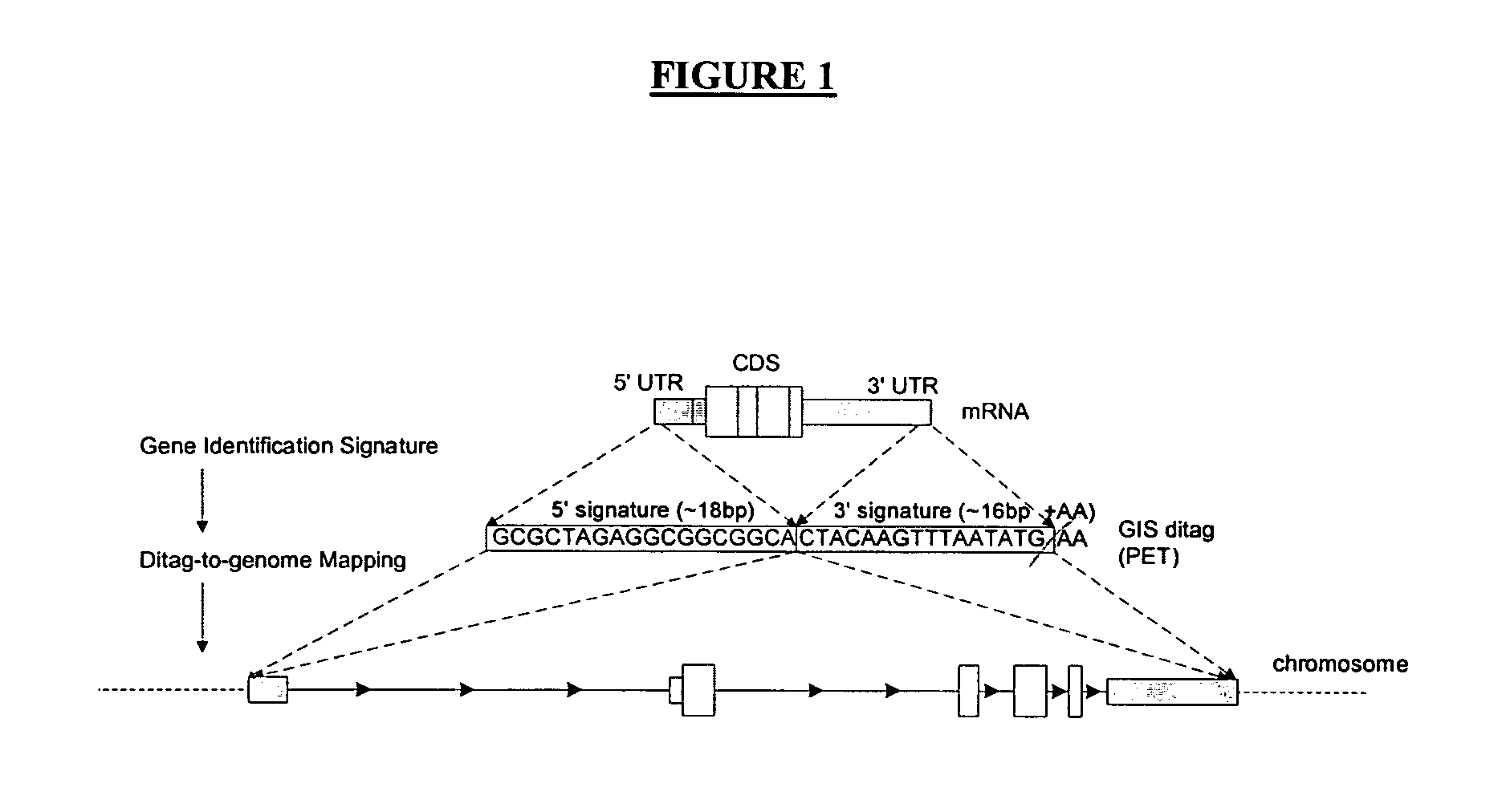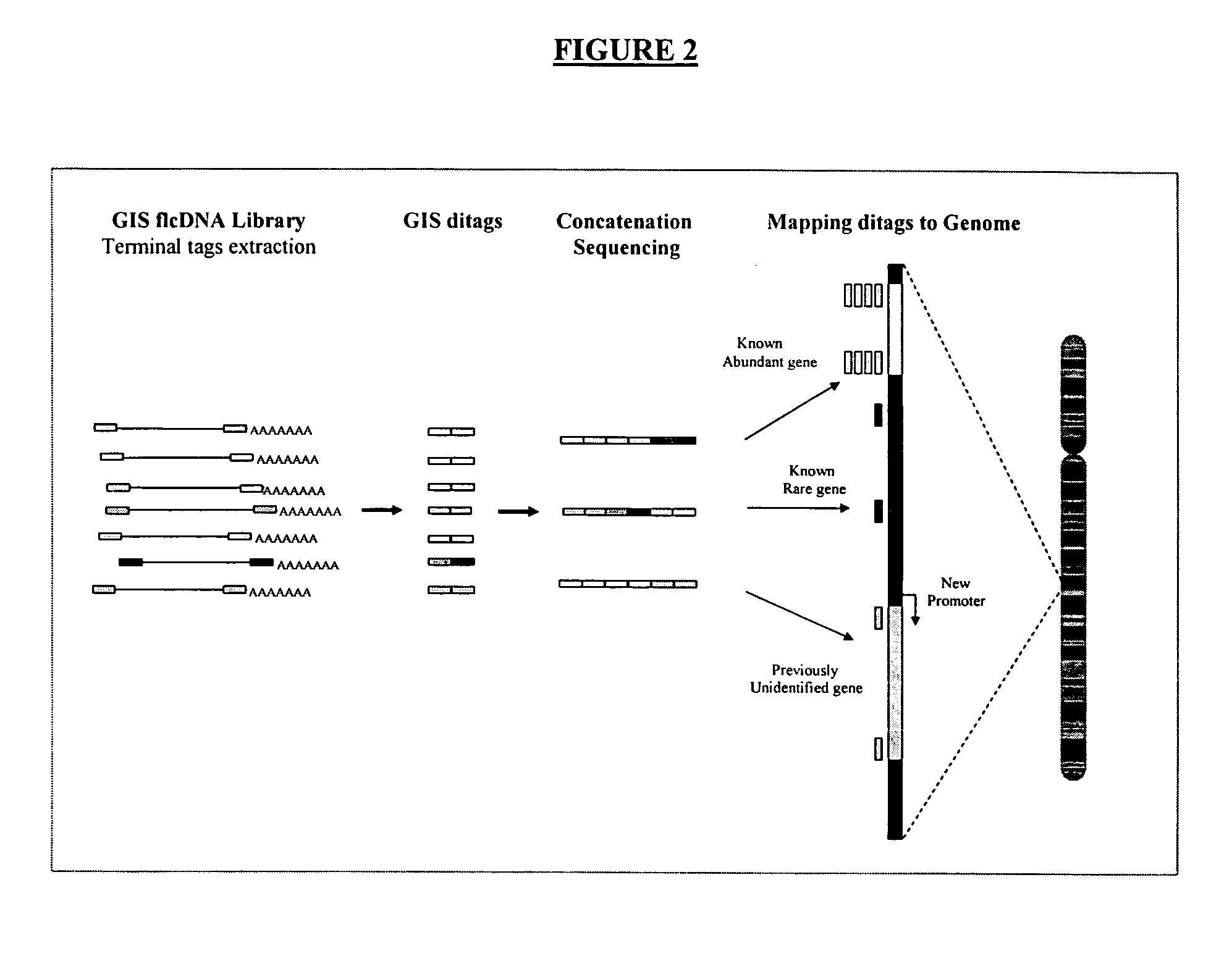Method of processing and/or genome mapping of ditag sequences
a technology of genome mapping and ditag sequence, applied in the field of processing and/or genome mapping of ditag sequence, can solve the problems of lack of the ability to define gene boundaries in the genome, poor specificity of the tags, and high cost of the approach
- Summary
- Abstract
- Description
- Claims
- Application Information
AI Technical Summary
Benefits of technology
Problems solved by technology
Method used
Image
Examples
Embodiment Construction
[0106] Complete genome annotation relies on precise identification of transcription units bounded by a transcription initiation site (TIS) and a polyadenylation site (PAS). To facilitate this, a pair of complementary methods, namely 5′LongSAGE (long serial analysis of gene expression) and 3′LongSAGE, was developed (Wei et al., 2004, see above). These methods are based on the original SAGE (serial analysis of gene expression) and LongSAGE methods that utilize typical full-length cDNA cloning technologies to enable high-throughput extraction of the first and the last 20 base pairs (bp) of each transcript. Mapping of 5′ and 3′ LongSAGE tags to the genome allows the localization of the TIS and the PAS.
[0107] However, matching of 5′ and 3′ tags derived from same transcripts in genome sequences are not always straightforward and can sometimes be very ambiguous. One solution is to clone the 5′ and 3′ tags of the same transcript by inter-linking the 5′ and 3′ tags. To achieve this, a speci...
PUM
| Property | Measurement | Unit |
|---|---|---|
| full-length | aaaaa | aaaaa |
| PET | aaaaa | aaaaa |
| nucleic acid | aaaaa | aaaaa |
Abstract
Description
Claims
Application Information
 Login to View More
Login to View More - R&D
- Intellectual Property
- Life Sciences
- Materials
- Tech Scout
- Unparalleled Data Quality
- Higher Quality Content
- 60% Fewer Hallucinations
Browse by: Latest US Patents, China's latest patents, Technical Efficacy Thesaurus, Application Domain, Technology Topic, Popular Technical Reports.
© 2025 PatSnap. All rights reserved.Legal|Privacy policy|Modern Slavery Act Transparency Statement|Sitemap|About US| Contact US: help@patsnap.com



